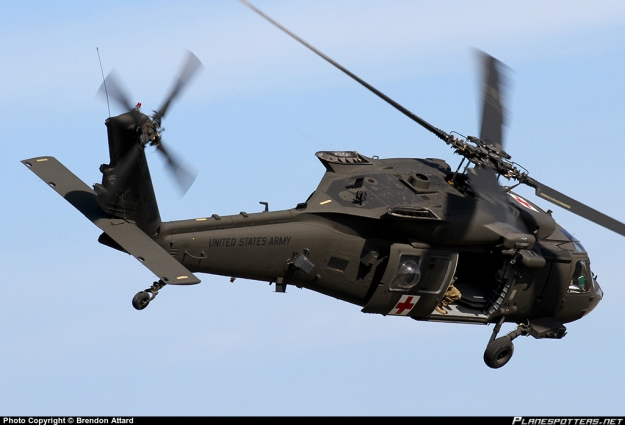Recognizing the Mechanics and Design Behind Uh 60 Helicopters
The UH-60 helicopter, generally recognized as the Black Hawk, stands as a pinnacle of modern-day rotorcraft modern technology, symbolizing a blend of durable design and detailed auto mechanics. As we peel back the layers of the UH-60's style, a globe of detailed systems and careful engineering comes to light.
History of UH-60 Helicopters
The background of UH-60 helicopters traces back to the late 1970s when the USA Military sought a innovative and functional utility helicopter to replace its aging fleet. In action to this need, the Sikorsky Aircraft Firm developed the UH-60 Black Hawk helicopter. Presented in 1979, the UH-60 quickly became a staple in armed forces procedures due to its outstanding capacities.
The UH-60 was designed to stand out in a variety of objectives, consisting of army transportation, medical discharge, electronic war, and special procedures. Its capacity to adjust to various functions made it a useful asset to the U.S. uh 60. Army and other army forces worldwide
Throughout the years, the UH-60 system has undertaken numerous upgrades and variations to boost its efficiency and keep pace with evolving mission demands. These helicopters have seen considerable service in conflicts such as the Gulf Battle, Afghanistan, and Iraq, showcasing their integrity and convenience in varied functional atmospheres. The UH-60's rich history is a testament to its enduring heritage as a leading energy helicopter.

Engine and Power Equipments
Utilizing sophisticated propulsion innovation, UH-60 helicopters are outfitted with innovative engine and power systems to guarantee optimal performance and dependability in an array of functional situations. The UH-60, typically called the Black Hawk, is powered by two General Electric T700-GE-701D engines, each efficient in supplying up to 1,940 shaft horse power. These turboshaft engines supply the required thrust for the helicopter to lug out its missions efficiently, including troop transport, clinical evacuation, and fight assistance.

Rotor System and The Rules Of Aerodynamics
Exactly how do the blades system and the rules of aerodynamics of UH-60 helicopters add to their operational effectiveness and trip capabilities? The blades system of the UH-60 helicopter plays a crucial function in supplying lift and propulsion. The UH-60 includes a four-bladed, completely expressed rotor system that enables high maneuverability and security during flight. This style allows the helicopter to carry out a large array of missions, from transportation and medical emptying to battle operations.
Aerodynamics likewise play a key duty in the efficiency of UH-60 helicopters. The streamlined body and rotor blade design decrease drag, enabling the helicopter to attain greater rates and much better gas performance. The wind resistant design of the UH-60 also adds to its ability to run in diverse ecological problems, consisting of hot temperature levels and high elevations.
Avionics and Flight Control Equipment

In its complex sychronisation with the rotor system and aerodynamics view of UH-60 helicopters, the avionics and flight control systems form an important network of modern technologies forming the airplane's functional abilities. In the UH-60, these systems consist of digital displays, interaction radios, General practitioner navigation, weather condition radar, and auto-pilot systems.
The flight control systems of the UH-60 are in charge of equating the pilot's inputs right into the proper modifications to the rotor system, making sure stable trip and ability to move. These systems contain hydraulic actuators, servos, and computers that function with each other to control the primary and tail rotors, along with other flight control surfaces. By specifically handling the helicopter's trip dynamics, these systems allow pilots to do a vast array of goals, from transport and search-and-rescue to combat procedures, with precision and self-confidence.
Duty and Applications in Air Travel
Avionics systems in UH-60 helicopters include a variety of electronic systems that help in navigating, interaction, surveillance, and controlling various airplane features. These systems consist of digital displays, autopilot systems, communication radios, General practitioner navigating devices, and weather radar. Furthermore, these systems include safety functions such as autopilot settings, surface awareness advising systems, and stability enhancement systems to boost the overall security and operational abilities of the UH-60 helicopters in different objectives, including troop transport, clinical evacuation, search and address rescue, and aerial firefighting.
Final Thought
Finally, the UH-60 helicopter is a flexible airplane with a rich history and progressed engineering. Its engine and power systems, rotor system, aerodynamics, avionics, and flight control systems all interact to make it a efficient and reliable equipment. The UH-60's role and applications in aviation are large, varying from armed forces operations to search and rescue goals. Its continued development and usage demonstrate its significance in the field of air this page travel (uh 60).
In its complex control with the rotor system and the rules of aerodynamics of UH-60 helicopters, the avionics and flight control systems develop an important network of innovations forming the airplane's operational capabilities.The trip control systems of the UH-60 are responsible for equating the pilot's inputs into the appropriate changes to the rotor system, guaranteeing steady flight and ability to move. Avionics systems in UH-60 helicopters include a variety of electronic systems that aid in navigating, interaction, monitoring, and regulating various airplane functions. Furthermore, these systems integrate safety and security functions such as autopilot modes, terrain awareness cautioning systems, and stability enhancement systems to boost the general safety and security and operational abilities of the UH-60 helicopters in various objectives, including troop transport, clinical discharge, search and rescue, and aerial firefighting.
Its engine and power systems, blades system, aerodynamics, avionics, and flight control systems all work with each other to make it a dependable and effective machine.